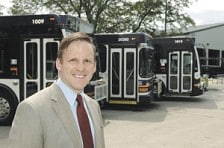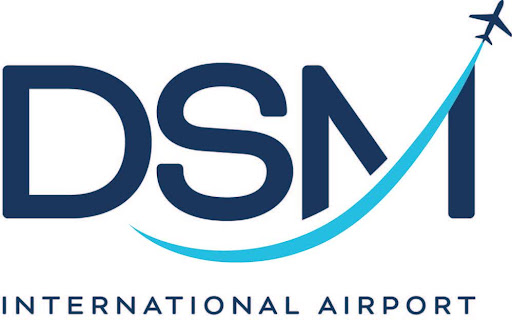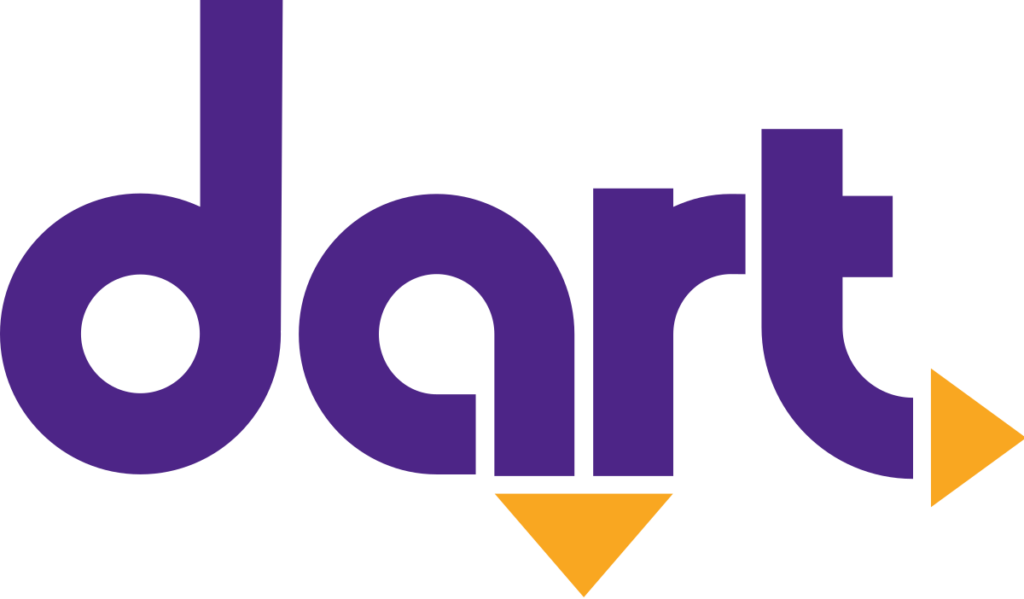Transfer point
Five years in, DART must get community buy-in as it prepares for transitions

Potential. Excitement. Momentum. Investment.
Recently hired General Manager Elizabeth Presutti uses all of these words to describe the future of the Des Moines Area Regional Transit Authority (DART).
Another word describes well DART’s situation: Transition.
“You can’t see a lot now, but over the next six months, there’s going to be a lot of activity, and things are going to start to come to fruition,” Presutti said. “I know I’m excited.”
As regional bus transit in the area turns 5 years old, Brad Miller, DART’s first general manager, has left for a new job with the Pinellas Suncoast Transit Authority in Pinellas County, Fla., in the Tampa and St. Petersburg metro area.
That leadership transition happens as DART embarks on a pair of major projects.
Work is under way on developing DART Forward 2035, a long-term planning project that Miller deemed “essential.” Ground has been broken on a new downtown transit hub, DART Central Station.
The departure of Miller, whose last day at DART was June 28, doesn’t seem to have officials worried. A solid groundwork and a strong leadership team are in place to help Presutti succeed, they say.
The key to regional transit success in Greater Des Moines, though, will be getting member communities and their residents to buy into DART both financially and as an idea, particularly with respect to the 2035 plan.
“It will take buy-in by the community,” Miller said before transitioning out of leadership. “It’s going to be important to present the plan in order to get folks to buy into it. … There is certainly a question of how much and who should pay for it. But as far as riding a high-quality service, I think everybody is in favor of that.”
DART has had its ups and downs in the five years since transforming from a city bus system to one serving a larger region. Now, as its first leader steps aside, DART faces a critical juncture.
Moving forward
One of the major challenges DART has faced was a series of pedestrian accidents in 2007 and 2008.
From a safety standpoint, DART has made a major push to update its safety measures, to the point that Miller is confident that the culture has changed within the organization. To back up his point, DART received a national safety award last month, and touts an accident frequency rate of 1.02 per 100,000 miles in the most recent fiscal year, down from 3.47 per 100,000 miles as of August 2007.
Angela Connolly, a Polk County supervisor who serves as DART Commission chair, knows that DART has had a hard time moving on from a public relations standpoint, but hopes the positive things happening for DART right now will help people forget about past difficulties.
“I think probably we’re about there on the perception, but because we had (accidents) so frequently there for a while, people remember that,” Connolly said. “But now I’m hoping they’re just going to be talking about the DART Central Station.”
That’s not to say the challenges are gone. DART still faces a potential $5 million budget gap in fiscal year 2015, has been forced to cut service and has had to battle to keep some communities as part of the system.
The 2035 plan is expected to help address those problems. The goal is to figure out what passengers and potential passengers want in their public bus system, and revamp the routes and service structure accordingly.
“It’s essential,” Miller said of the plan. “The question I got asked most (by member communities) is ‘OK, if we are members of DART and we are buying into this regional concept, what are we going to get?’ I’ve tried to give the best answer I can. But we have not had a plan.”
Soon, they will. Miller stresses that routes will change, and some riders will be unhappy about it. He won’t be here to see it, but he knows there will be some heated discussions.
“But I think the plan will show what DART can offer, and show that it can provide a high-quality service that can attract more riders than we do today,” he said.
Public feedback that DART gathered revealed residents’ wish list for DART: People want more frequent service, a wider range of service and quicker travel times. The bus system has primarily served daytime commuters in its first five years. Now, people want that and leisure service as well.
How can DART improve in all three categories? “That’s the million-dollar question,” Connolly said.
“We’ve really used our existing ridership as a baseline. Where are we getting the most ridership as well as looking at new areas of growth?” said Presutti, who started as general manager on July 1. “As we start to phase it in over the next 20 years, I think we will accomplish both. One might come before the other in some respects, in terms of frequency vs. coverage. But at least we have a plan for growth, and people can see where we will get service next, and how we’re going to accommodate it.”
Growth will have to be strategic, Miller said. Some of the 19 member communities likely won’t buy in. In the first five years, keeping all the communities involved was crucial as DART found its footing. Now that it is embedded in the area, Miller said, “There may be communities that place a higher priority on it than others. The investments may need to be more strategically placed in some areas than others.”
In with the new
In what figures to be a crucial point in DART’s maturation, transitioning to a new general manager won’t be a problem, officials insist, because of the structure the leadership team already has.
“Because of who we have in place at DART besides (Miller) leaving, I don’t think we’re going to skip a beat,” Connolly said. “I think (Presutti) is going to have to hit the ground running, because we already have great things in place.”
Presutti, who was one of the five finalists vying to take over as general manager, credits Miller for building the framework.
“He’s really evolved transit,” she said. “I think we’ve set in motion a lot of the building blocks to really make DART a progressive transit system for the country.”
A recurring theme in a panel discussion among the five finalists was taking care of the financial situation, as well as figuring out the best way to reach new passengers, which will be aided by the 2035 plan.
Also important, Miller said, is that Presutti must be good at making sure she is representing DART well in the community.
“Either by running services that the community doesn’t want or use, that are not efficient or effective, or if there is some other problem, you will lose the community’s support,” he said. “Even if the financial winds improve dramatically, you’ll lose. You won’t be able to run the DART service effectively.”
At a glance: Current and future issues
Budget gap: DART faces a potential $5 million budget gap in 2015. Original projections called for revenues and expenses to be nearly even at $24 million, but revenues have gone down and expenses have gone up. About 30 percent of DART’s funding comes from a tax levy, which officials have said will likely have to be raised in the future in the communities outside Des Moines that use the system. “I think people are going to need to understand that in order for us to become more efficient and effective for what our riders need, they’re going to need to buy in to the financial end. That’s the only way it’s going to grow,” said DART Commission Chair Angela Connolly.
Service: How does DART best serve its member communities in a financially sustainable way? That is what the DART Forward 2035 plan is intended to answer. Public input has shown that people want more frequent service and service to more areas. New General Manager Elizabeth Presutti thinks DART can provide both, but warns it will take time.
A bus city: A theme at public meetings for the 2035 plan and at the roundtable discussion among general manager finalists centered on how to make a populace that is used to driving take the bus instead. Officials take solace in the fact that of the more than 1,200 people who took a public survey on the 2035 project, nearly 50 percent of them were not riders. “There’s definitely an awareness of public transit,” Presutti said.











